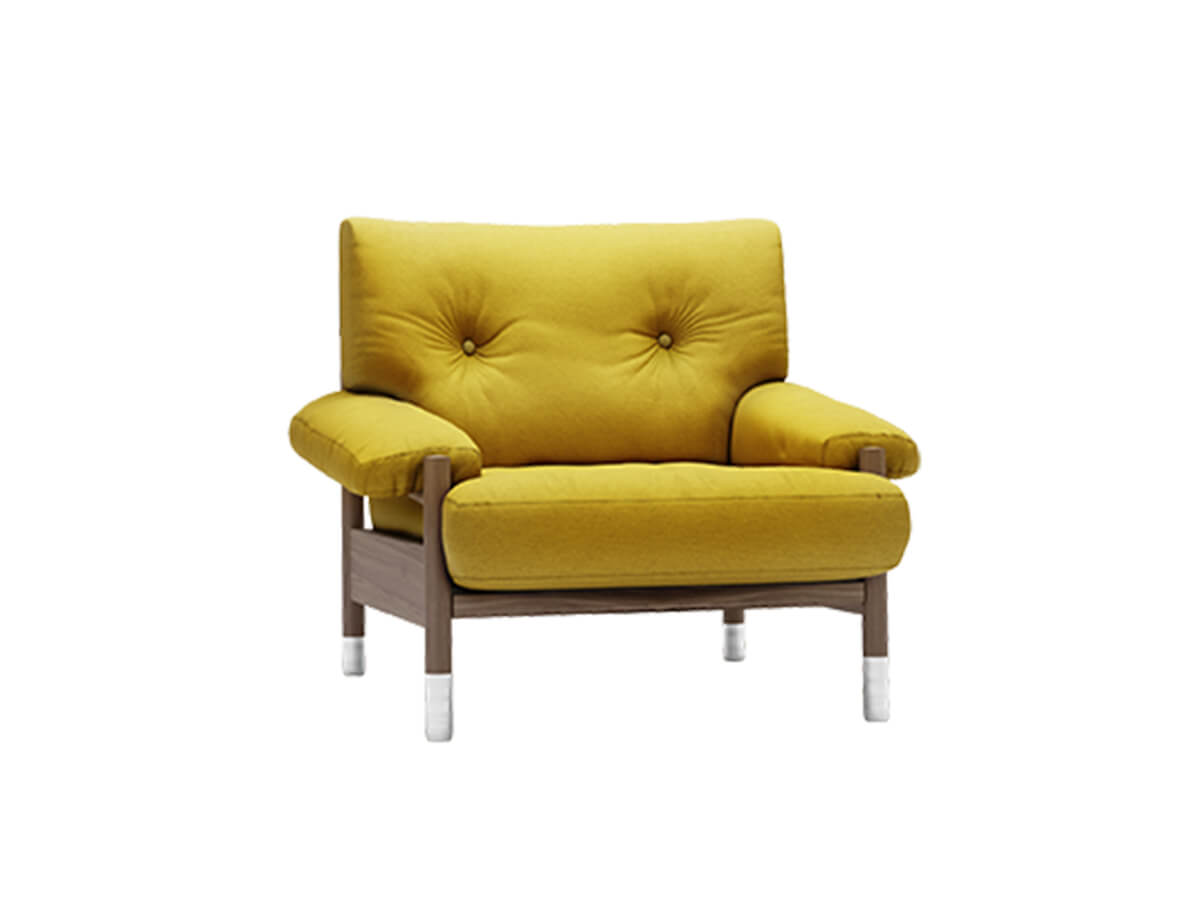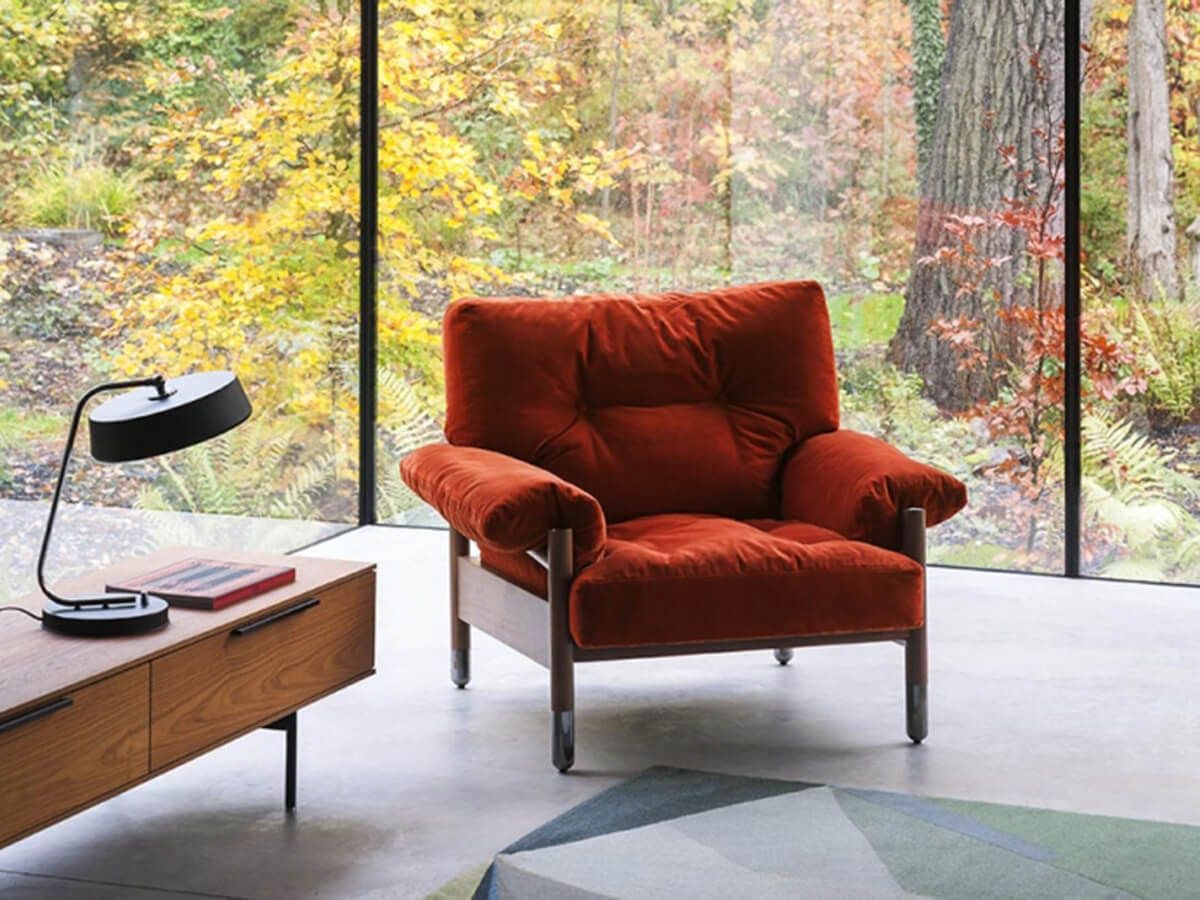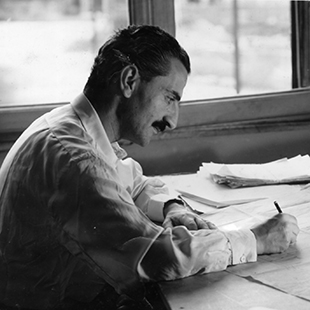Tacchini
Sella Armchair
Price starting from € 6.905,00*
*Price valid for the version with upholstery in fabric cat. B and frame in canaletto walnut (cod. OSEL102).
The Sella armchair by Tacchini is one of the most interesting products of its “vintage” selection: signed by the famous architect Carlo De Carli in 1966, it is imbued with an unmistakable retro charm. Each of its elements is inspired by an ideal of traditional quality, from the exposed walnut wood of the base to the metal tips, up to the soft and refined workmanship of the seat and back which can be made of fabric, leather or velvet. Large and welcoming, the seat of the Sella armchair is a real invitation to relax and rediscover the relaxed and meditative rhythms of life typical of a past era.
W.102 x D.97 x H.83 cm
Seat Height 42 cm
Salvioni Design Solutions delivers all around the world. The assembly service is also available by our teams of specialized workers.
Each product is tailor-made for the personal taste and indications of the customer in a customized finish and that is why the production time may vary according to the chosen product.
To discover the full range of services available, visit our delivery page.
Personalize your request
Upholstery
Select
Select
Select
The Tacchini company was founded in 1967 in Seveso. A soul mainly oriented towards contract marks the first years of its work, later increasingly aimed at enhancing quality, style, taste, but above all the use of materials that are able to express the Made in Italy craftsmanship quality. Today Tacchini Italia presents itself as a trendy brand, attentive to contemporary influences and capable of giving life to iconic models that perfectly match the needs of our time. Upholstery and seats act as cornerstones of the Tacchini Italia catalog, also strong in re-editions by great masters of the past and proposals by emerging designers.Read more
Designed by
Carlo De Carli
Carlo De Carli (1910-1999) was an appreciated Italian post-war architect. Friend and follower of Gio Ponti, with whom he collaborated both at the university level and by being part of his studio for a year, he was Ponti's successor in 1962 on the prestigious chair of interior architecture at the Milan Polytechnic, from which he helped to form a entire generation of designers. He was also dean of the Faculty of Architecture at the Polytechnic from 1965 to 1968, going through the difficult years of student protests, and collaborated for a long time with the Milan Triennale. His work, especially important from a theoretical point of view, follows in the footsteps of Gio Ponti's thought and develops the theory according to which architectural practice had to be the same both in the design of large buildings and in small everyday objects, “from the spoon to the city”, according to a lucky expression by Ernesto Nathan Rogers. He implemented these theories by collaborating with various artisan realities in Brianza, with whom he will create furnishings with dynamic lines with a typically Mid-Century taste, capable of overcoming certain rigidities typical of Rationalism. Among the companies with which he collaborated are Cassina (with which he won the Compasso d'Oro in 1954 for the 683 chair), Tecno, Longhi, Sormani, which today, however, no longer have any of his creations in their catalogue. Instead, he is present in the selection of products by Tacchini and Gubi, brands renowned for their ability to give new life to masters of the past. In the architectural field, he carried out his most famous projects between the end of the 1940s and the 1950s, including the building in via dei Giardini and the church of Sant'Ildefonso, both in Milan.
Read more


